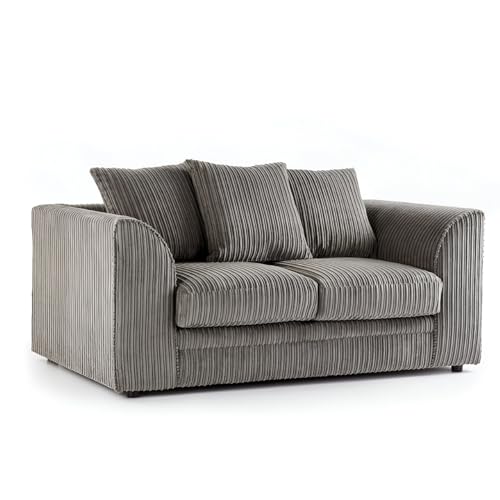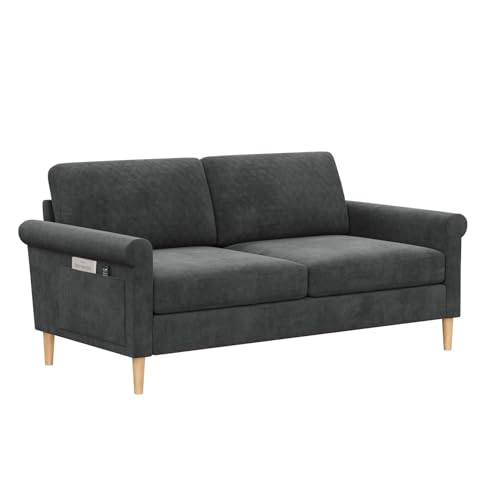Guide To 2 Seater Leather And Fabric Sofa: The Intermediate Guide The …
페이지 정보

본문
 Choosing Between a 2 Seater Leather and Fabric Sofa
Choosing Between a 2 Seater Leather and Fabric Sofa It can be difficult to decide between fabric and leather when you're looking for a new sofa. This is especially true if you don't have a lot of furniture experience.
It can be difficult to decide between fabric and leather when you're looking for a new sofa. This is especially true if you don't have a lot of furniture experience.If you have children or live in a small space, a leather option could be the best option for you. It's easy to wipe down and it is stylish in all homes.
Comfort
A sofa is the focal point of most people's living spaces and is a major purchase. You want a sofa that you can sit on for a long time, looks great, fits with your room style and can last for a long time. It isn't easy to choose between fabric and leather, however, you must take into consideration your lifestyle, budget, and other priorities before making a choice.
Leather is a luxurious material that is soft and luxurious and radiates class in a home. It is strong, stain-resistant, resistant to pets and children, and will last for a long time if properly cared for. However, it can be more expensive in the beginning and could require regular conditioning to prevent cracking or peeling.
Fabric sofas are available in a variety of styles, colors and fabrics and can be an affordable alternative to leather ones. They are also softer and more inviting, with the ability to feel "broken in" right from the beginning. They could be more vulnerable to dust mites or pet hairs and require more frequent cleaning. There are now hypoallergenic fabrics as well as new technology available.
The longevity of a fabric sofa will depend on the quality of the material however, most fabrics will last up to 15 years if properly taken care of. Regular vacuuming and deep cleaning will ensure that the fabric is free of odours, stains and dirt. Like leather, they can be susceptible to flattening and sagging over time. A lot of large 2 seater fabric sofa couches are treated with chemicals to make them stain resistant and flame retardant. They can release volatile organic compounds that can affect the quality of indoor air and trigger allergies.
Durability
When purchasing sofas, we typically opt for fabrics that are extremely durable because this can be essential when you have pets or children. It's not necessary to invest lots of money in the beginning if you're going to regret it after the very first smudge or claw. You don't want a cheap 2 seater fabric sofa item that can't withstand regular use.
Leather is also extremely resilient and has a remarkable tear strength. It can also last up to 4 times longer than fabric and it is naturally resistant to fading, cracking and flaking over time. It can be treated to replenish its natural oils, and make it look like new.
Fabrics are a cheaper option and come in a variety of colors, patterns, and textures to fit any design. They are also less difficult to clean than leather and can withstand a decent amount of wear and tear however they tend to be more prone to moisture and be susceptible to fading in time.
Microfiber is extremely durable and comes in a range of colors. However, it may not be as strong as genuine leather. It may also not be able to take scratches. It's an excellent choice for families due to its resistance to stains and spills. It's also simple to clean using an aqueous cloth.
Suede, on the other hand is a challenge to maintain clean and can be more difficult to repair than leather. It is also prone to losing its shape if not regularly cleaned and may feel rough to the roughness of the. It is also a very thin material, so it might not be as tough as cowhide and sheepskin leather.
Allergens
The material your sofa is made from can have a significant impact on your allergies, so it's important to know the different ways to treat. Fabrics are known to hold allergens like dust mites and pet dander which can trigger symptoms such as asthma, hay fever, rhinitis and eczema. This is because these fabrics provide the perfect environment for them to fester.
Leather, on the other hand isn't prone to accumulating allergens and provides constant comfort regardless of the season. It can also trigger dermatitis in people who have contact dermatitis or are sensitive to the chemicals used in tanning. To avoid skin reactions, it's essential to use products that are vegetable-tanned and keep a consistent skincare routine.
Both sofas made of fabric and leather are robust, but the fabric you choose will have a significant effect on how well your sofa holds up to wear. A high-quality material will resist fading or sagging and can withstand spills body oils, spills and everyday use. Modern sofas come with stain-resistant treatments that make cleaning simple.
It's not possible to completely prevent an allergic reaction to the leather on your couch, but you can help avoid allergens if you keep a lint-roller nearby and clean regularly your living space. This will lessen the amount of dirt, pet hair and dust mites you find on your sofa. If you're still suffering from allergies, you can try replacing your sofa with a more hypoallergenic one. For instance, a leather sofa 2 seater fabric made of vinyl or synthetic leather is less likely to collect dust mites and pet dander, and will help you breathe easier.
Scratches
It is important to think about the amount of wear you can anticipate a leather couch to endure. The color, finish and the quality of the leather are all crucial elements in determining the length of time a sofa will last. You should also make sure it's durable enough to withstand spills and other accidents. This can be accomplished by looking for a couch with a strong hardwood frame and high-density foam cushions.
Leather can be damaged by a variety of reasons like stretching it, marking territory or in the process of reliving tension. Scratches vary in severity. They can range from minor surface scratches, to deep punctures or cuts. Minor scratches can be repaired by applying a conditioner for leather to the area affected. This will restore the balance between moisture and oil within the leather, and stop it from drying out or cracking. The severity of the damage will determine the type of treatment needed.
If you have cats, it's an ideal idea to trim their nails regularly, as this will assist in stopping scratching on your couch. You can also redirect their scratching behaviour by giving them alternative scratching surfaces, such as sisal rope or cardboard. You can also use a pet safe furniture polish that you can apply with a soft, clean cloth.
In addition to cleaning your leather couch regularly, it is also recommended to keep it from direct sunlight and sources of heat because this could dry out the leather. This could cause it to crack, which is usually difficult to repair and frequently requires the reupholstery. Use a conditioner for leather to keep the leather soft.
Smell
A leather couch tends to have a distinct scent than 2 seater fabric. It's because leather is porous, and can absorb odors such as smoke, body odors or food. The good news is that odors tend to dissipate over time, especially when you use a non-toxic, fragrance free cleaner.
However, if the smell is intense, it could indicate that there's something wrong with the foam. This is usually caused by the chemical off-gassing that occurs from petroleum-based polyurethane. If you're worried about this, consider couches made of CertiPUR US certified or natural latex foams.
A second way to identify faux leather is to look for bumps or a texture on the back of a sofa. This is a sign that the leather is bonded and not authentic top grain. You can also do an inspection by tilting the sofa to one side and observing any exposed upholstery backing. If you smell it, then it's probably a synthetic substance like polyester or polyurethane. These materials will have a distinct scent than leather.
A leather sofa is more prone to picking up smells, the best method to avoid this is by regularly cleaning your sofa. This will keep it looking great and fresh as well as preventing it from becoming stiff or cracked in time. Begin by vacuuming and dusting the couch, then wiping it down with a dry cloth and baking soda (a great natural method to remove odors). This is to be done every two weeks in order to remove dust or dirt. Then apply a leather conditioner to help keep your sofa's color and texture.
- 이전글Кишинёв купить Мефедрон Скорость ск 24.10.25
- 다음글Guide To Programming A Key In 2023 Guide To Programming A Key In 2023 24.10.25
댓글목록
등록된 댓글이 없습니다.